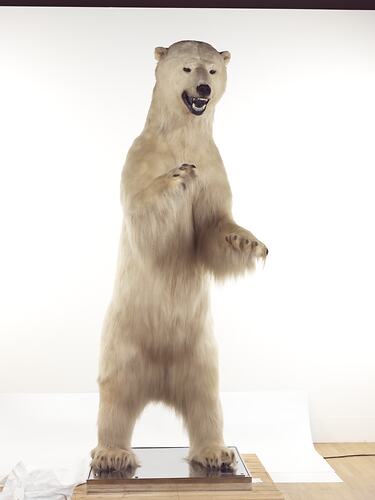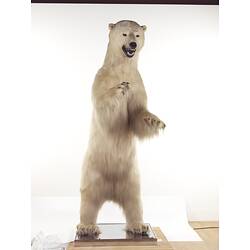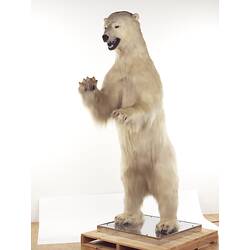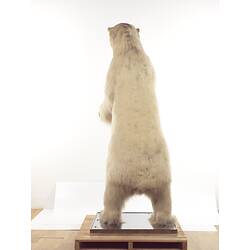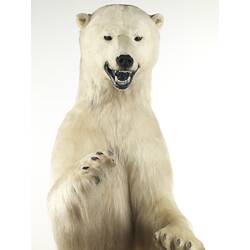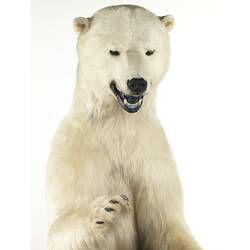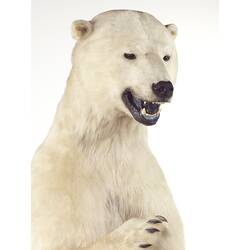Summary
Polar Bears live around the Arctic Ocean, north of the Arctic Circle. This range includes the north of Canada, where this specimen came from, Greenland, Russia, and the USA. They are important to the indigenous peoples of these areas, providing materials for use in clothing, including furs and sinews for sewing, for medicines and for food. In most countries hunting is banned or restricted to indigenous subsistence hunters.
Polar Bears mainly eat seals, which they hunt from sea ice. In areas with permanent sea ice they can hunt all year, but most populations can't hunt in summer when the sea ice retreats. They spend these months on land fasting.
As global temperatures continue to increase with global warming loss of their Arctic sea-ice habitat will continue to be a serious threat to Polar Bears. The International Union for Conservation of Nature (IUCN) therefore currently lists Polar Bears as Vulnerable. Polar Bears are also included in Appendix II of the Convention on International Trade in Endangered Species (CITES) to ensure that international trade does not threaten their survival in the wild.
Specimen Details
-
Taxon Name
-
Preferred Common name
Polar Bear
-
Number Of Specimens
1
-
Specimen Nature
Nature: Mount, Form: Dry
-
Category
-
Scientific Group
-
Discipline
-
Collecting Areas
-
Type of Item
Taxonomy
-
Kingdom
-
Phylum
-
Subphylum
-
Class
-
Order
-
Suborder
-
Family
-
Genus
-
Species Name
maritimus
Geospatial Information
-
Country
